Two years ago, Godox launched two flashes with a distinctive, retro look: the Godox Lux Senior and Lux Junior (which we reviewed here). Godox have now added to the retro Lux collection with the new Godox Lux Cadet.
I’ve been using the Cadet for a couple of months, and in this article I’ll share my impressions of this cute little flash, as well as some photos shot on both digital and film.
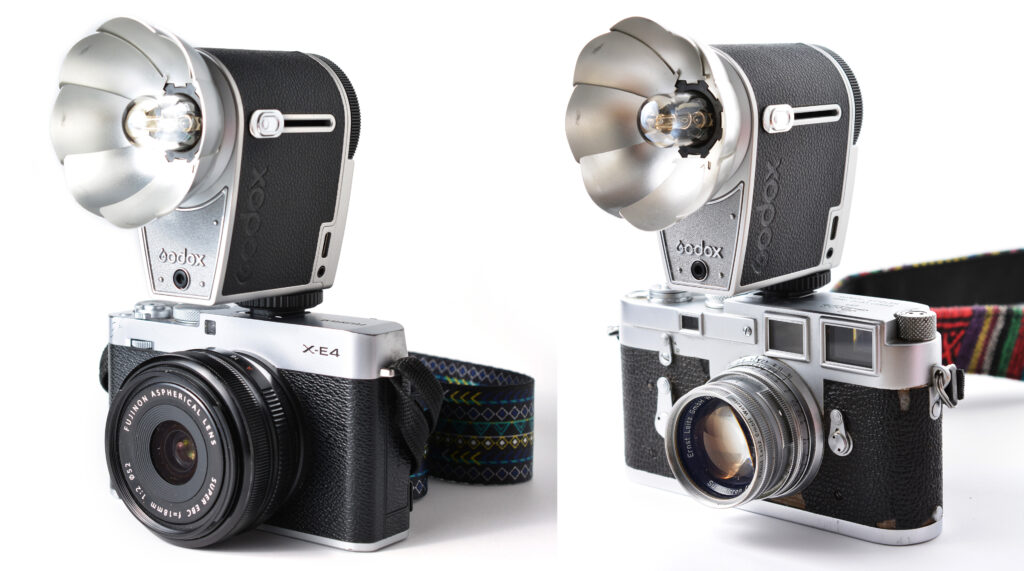
Review notes
Godox kindly sent us the Cadet for review, but I was not paid for this review, nor do we have affiliate links. As always, my goal in this review is to be honest and objective.
The digital photos in this review were shot with a Fuji X-E4 camera and various lenses (if you want more details about gear, just ask me in comments). The film photos were shot with a Leica M3 (colour) and Minolta X-370s (black and white).
The Godox Lux Cadet can be used in either Manual or Auto mode. I used Manual mode for all photos except the ones in the Auto section (see below). I didn’t always note the flash power, but that’s not so critical. What is important is that all these photos were achievable at somewhere between minimum (1/64) and Full power.
What’s in the box
The Cadet comes with a USB charging cable, a 2.5mm to PC sync cable (especially useful for older cameras with no hotshoe), and a cloth bag.
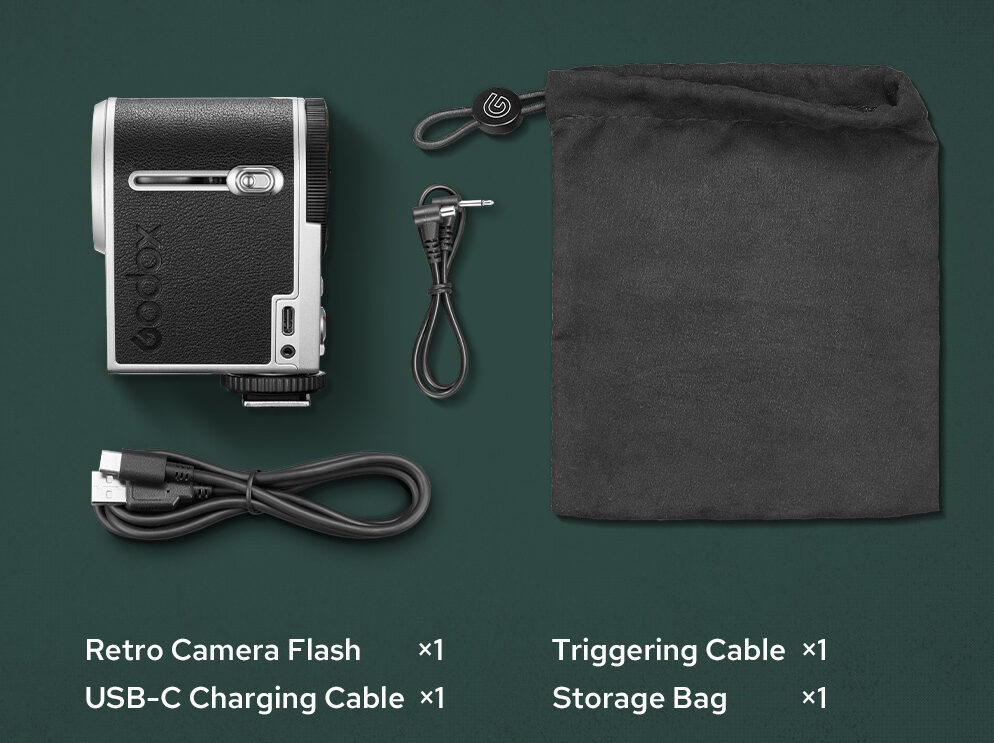
Look and feel
If you like retro design, the Godox Lux series are possibly the coolest-looking flashes currently on the market. They are compatible with pretty much any camera – film or digital – which has a hotshoe or PC terminal.
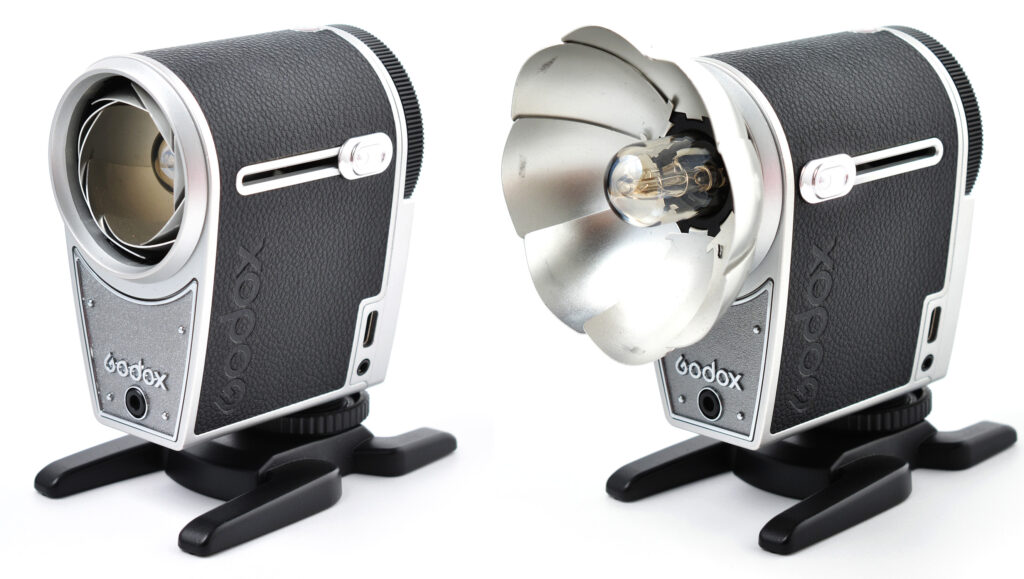
The Cadet’s defining feature is the fold-out reflector. It’s smaller than the reflector dish on the Lux Senior, but I’m not sure how much actual difference this makes in photos. In theory, a bigger reflector produces a softer quality of light, but the Senior’s reflector is not that much bigger. On the plus side, I prefer the Cadet’s sliding mechanism – faster and more convenient than unfolding the Lux Senior.
The “petals” are spring-mounted and have a little give, which means you can lay it on its side without retracting the reflector, and not worry about damaging it. Of course, retracting is ideal, but I like that you don’t have to. In the photo below, the flash is laid on its side on a bar table; you can see how the lowest petal has folded slightly inwards. I like such small but thoughtful design choices – they make devices so much more pleasant to use.
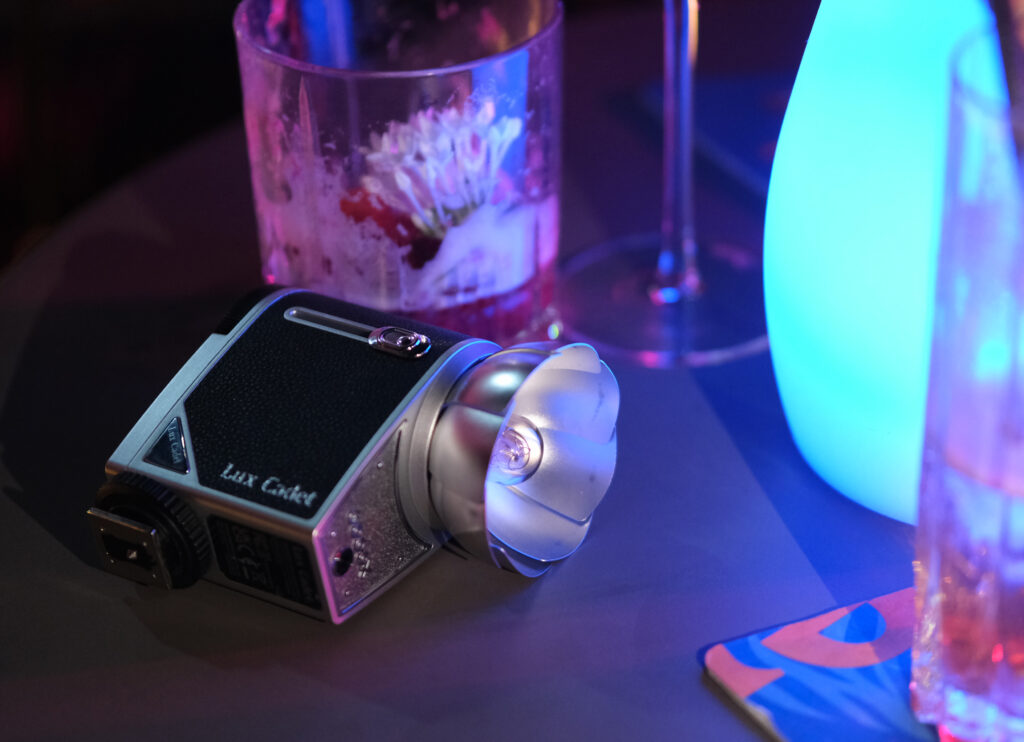 Conventional speedlights are versatile marvels of technology – I like my Godox V1 Pro and use it often – but let’s face it, they are not particularly pretty. With the Lux series, Godox clearly wanted to make the aesthetics a selling point, and in my view, it’s a real success.
Conventional speedlights are versatile marvels of technology – I like my Godox V1 Pro and use it often – but let’s face it, they are not particularly pretty. With the Lux series, Godox clearly wanted to make the aesthetics a selling point, and in my view, it’s a real success.
The Cadet leans into the retro aesthetic, with faux-leather trim, chrome accents and physical dials. The reflector is reminiscent of the kind of flashbulbs that were often used with TLRs and Speed Graphics. But I think it also pairs well with modern cameras, especially retro-styled cameras like the Fuji X series or Nikon Z fc.
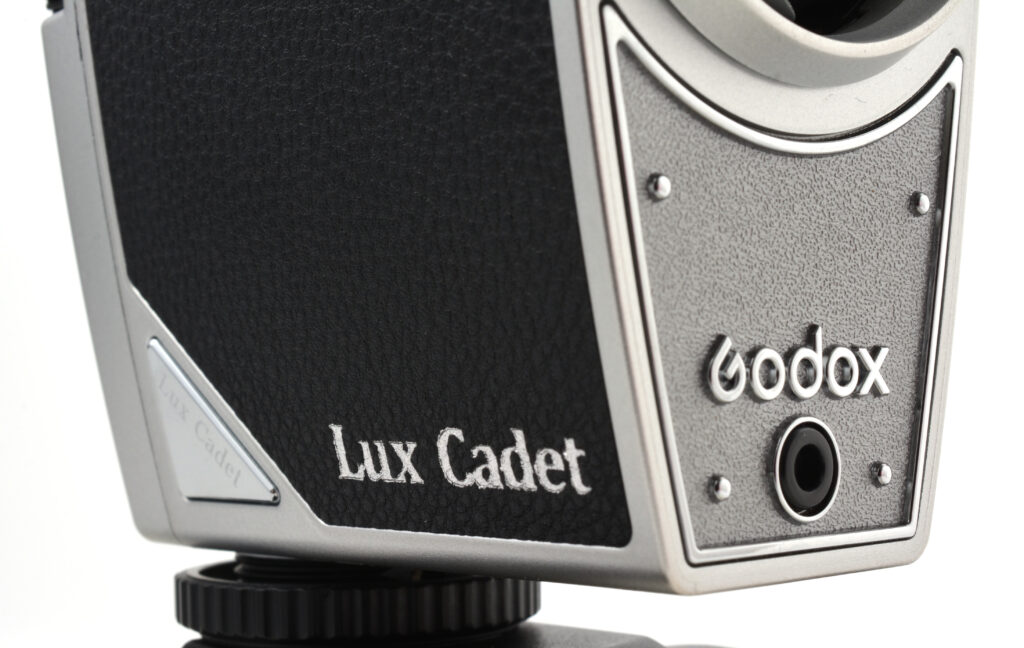
Now you might say: instead of flashes which merely look vintage, why can’t we buy actual vintage flashes? You can, but there are some downsides. Many film-era flashes have discharge voltages which will fry modern cameras (this excellent article by Matt Wright on Emulsive goes into more detail). Older flashbulbs, like those from which the Cadet draws design inspiration, were single-use; you had to replace the bulb each time it fired. (They had other disadvantages too – took a while to reach full power, were too hot to handle for a while after going off, and so on – but the single-use limitation alone makes them too impractical for most of us.)
The haptics and finish are excellent, with switches and dials that click satisfyingly into place. For me, the analogue-style dials are a lot nicer to use than the buttons and LCDs on modern speedlights. An added benefit is that even before you switch it on, you can see (and change) the flash power.
Specs
The Lux retro flashes are admittedly not as feature-packed as some of Godox’s “mainstream” offerings. Even the entry-level TT350, for example, is more advanced than the Cadet. However, the Cadet, and the Lux series in general, are more advanced than most film-era flashes. For instance, the flash power can be set both automatically and manually, from Full power down to 1/64. it also has optical control, which means it can be used off-camera, firing synchronously when it “sees” another flash.
The following specs are taken from the Godox website, except the price, which is from Amazon UK at the time of writing.
| Guide number (full power) | 10 (ISO 100, metres) |
| Flash power | 7 levels (1/1 – 1/64) |
| Colour temperature | 6200K ± 200K |
| Focal length | 28mm (fixed) |
| Battery | Lithium, 3.7V 1700mAh |
| Recycle time (full power) | ≈2.5 sec |
| No. of flashes (full power) | ≈620 times |
| Sync | Hotshoe, PC sync cable |
| Optical control | S1/S2 |
| Dimensions (reflector retracted) | 3.7″×2″×2.8″ (94mm×51mm×71mm |
| Weight | 171g |
| Price | £92 |
Your eyes probably glazed over all that info. That’s okay. In the next few sections I’ll take you through what these specs mean in practice.
Controls
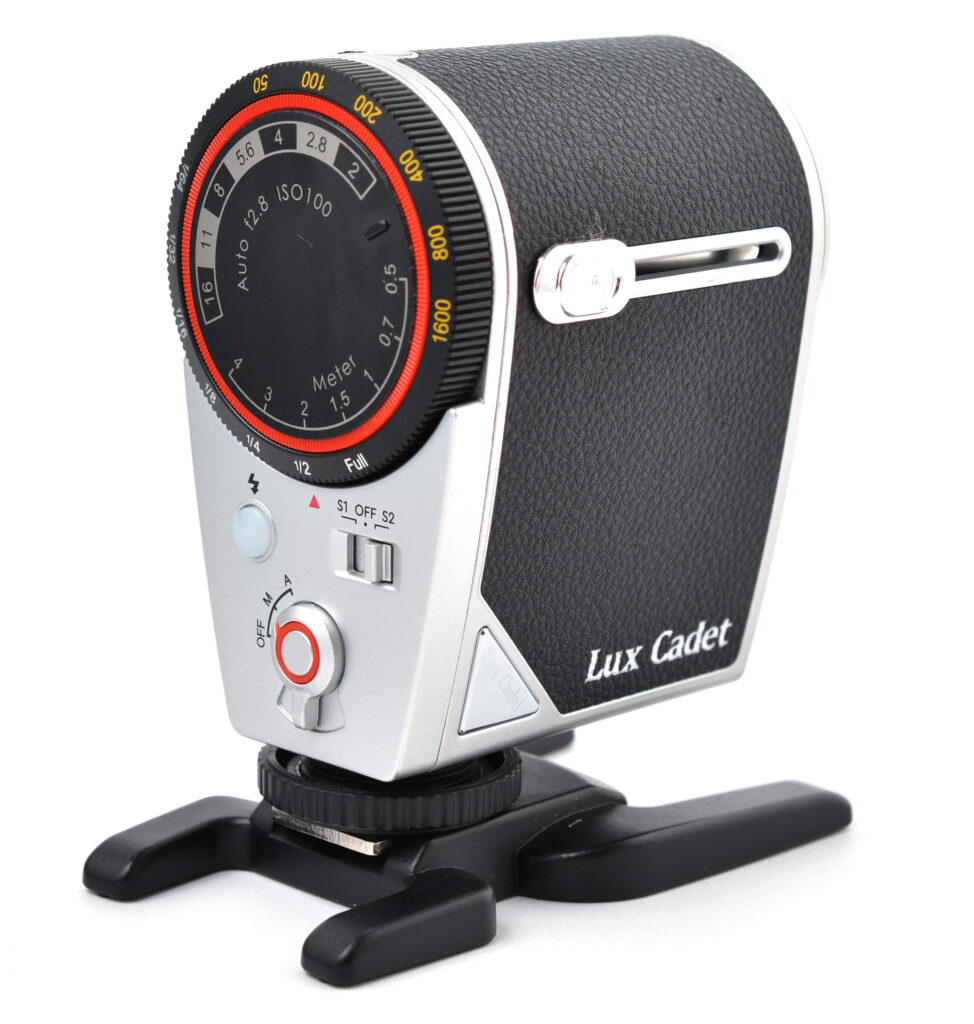
The main controls are all on the back of the flash. There is a dial which controls the flash power. It also has an inner dial which is basically an exposure calculator with no effect on flash output (more on this later).
Then there is a switch with three settings (Off, Manual and Auto), a second switch which lets you choose between two optical control modes (S1, where it fires instantly when it sees a flash, and S2, where it ignores the first pre-flash and only fires in response to the actual flash), and lastly a flash fire/test button.
On the two sides, there are sliding switches to unfurl the reflector. The left side (as seen from the back) also has a USB-C port for charging, and a 2.5mm port where you can plug in the PC sync cable (supplied). The latter is useful for older cameras with no hotshoe, or for off-camera flash more generally.
Manual and Auto modes
The On/Off switch also doubles as the Manual/Auto switch. When you turn the flash on, you choose between one of these two modes.
Manual
The Cadet has adjustable power (technically, it’s the flash duration which changes, not the power) ranging from Full power to a minimum of 1/64, at one-stop intervals (Full, 1/2, 1/4, 1/8 … 1/64). This is a very useful feature – another variable (in addition to ISO, aperture and shutter speed) that we can tweak to obtain the desired blend of ambient and flash exposure.
The photos below show how changing the power affects the image. All photos were shot at ISO 160, f/11, 1/180 sec (I only changed the flash power).
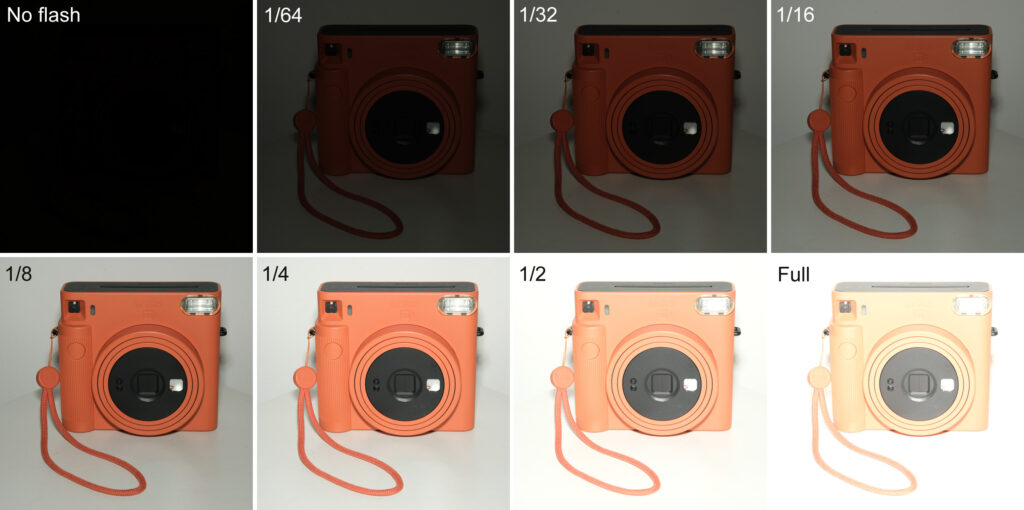 As I mentioned, the rear dial has an inner dial which is basically an exposure calculator. The calculator is straightforward. If you understand the relationship between ISO, aperture and shutter speed, you can master the dial in a matter of minutes.
As I mentioned, the rear dial has an inner dial which is basically an exposure calculator. The calculator is straightforward. If you understand the relationship between ISO, aperture and shutter speed, you can master the dial in a matter of minutes.
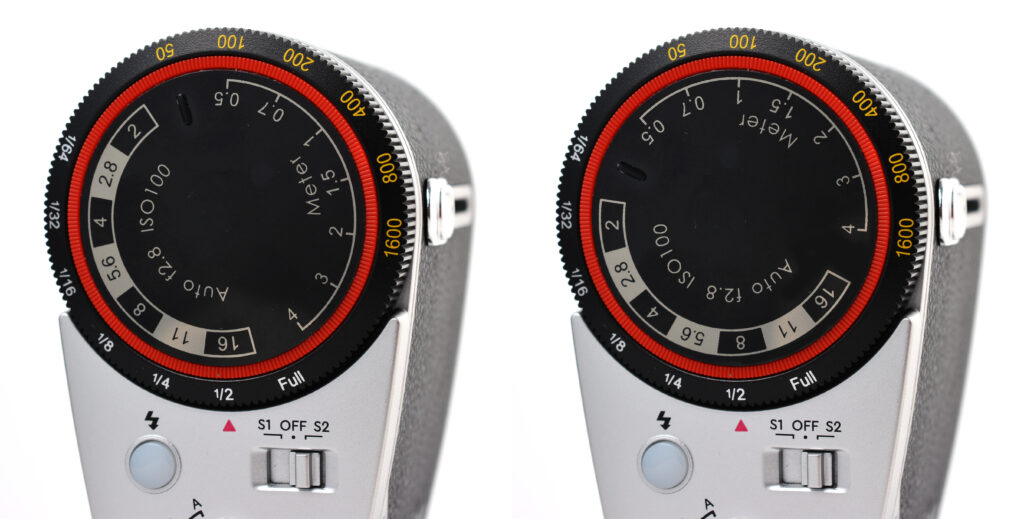
Let’s say you’re using ISO 400, and your subject is at a distance of 1 metre. You simply turn the inner dial to line up the ISO and distance, as shown above left. The lower half of the dial then shows you a few combinations you can use: 1/2 power and f/16, 1/4 power and f/11, and so on, through to 1/64 power and f/2.8. (The shutter speed doesn’t affect the flash exposure; as long as you’re at or below the sync speed, it only affects the ambient.)
Now let’s say you want to take another photo from further away (2 metres). Simply turn the dial to line up the ISO and the new distance, as shown above left. Now you can use any combination from Full–f/11 through to 1/32–f/2.
What if you wanted to use f/16? There’s no easy way do this with film, but on digital, you can simply increase the ISO to 800, then use f/16 and Full power.
Of course, the dial is an approximation. In certain situations – say if you’re mixing ambient light and flash – the dial values may not give you the result you’re looking for. In practice, when shooting digital, I rarely refer to the dial. I have a rough idea based on prior experience, and then I fine-tune it by chimping (take a photo, look at the LCD, adjust as necessary, take another). But on film cameras, the dial is super useful, especially since most modern flashes have no such guide at all.
Auto
Auto mode on the Cadet assumes you’re using ISO 100 and f/2.8. Equivalent settings would also work, such as ISO 50 and f/2, or ISO 400 and f/5.6.
Like any other automated feature on a camera, Auto mode may not give you optimal results in all situations, but it mostly does the job. The photo below, of my friend Olivia, was shot on a digital camera – ISO 100, f/2.8 and 1/60 sec with the flash on Auto mode.
 The next photo was with the same settings as above, but without flash.
The next photo was with the same settings as above, but without flash.
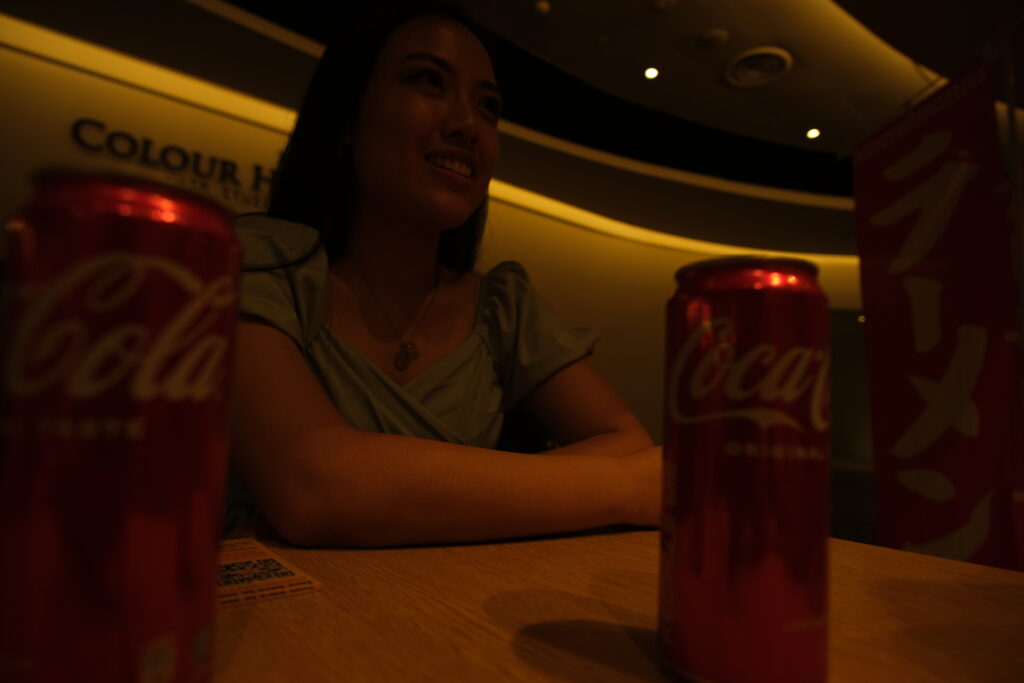 Like the other Lux flashes, the Cadet has a tiny sensor on the front, which I believe measures the distance to the subject. In my in-depth review of the Lux Junior and Senior flashes, I did some tests to show how the sensor works – feel free to check it out if you’re interested. The Cadet seems to work in the same way. One advantage of this system is that because the sensor is (presumably) measuring subject distance and not reflected light, it’s not fooled by dark or bright subjects as reflective meters tend to be.
Like the other Lux flashes, the Cadet has a tiny sensor on the front, which I believe measures the distance to the subject. In my in-depth review of the Lux Junior and Senior flashes, I did some tests to show how the sensor works – feel free to check it out if you’re interested. The Cadet seems to work in the same way. One advantage of this system is that because the sensor is (presumably) measuring subject distance and not reflected light, it’s not fooled by dark or bright subjects as reflective meters tend to be.
The photo below was shot on Auto mode (at ISO 800 and f/8, which is equivalent to the recommended setting of ISO 100 and f/2.8). Photos like this can be tricky with flash, because you risk overexposing the people who are closer to the camera, or underexposing the singer who is further away. Nevertheless, both foreground and background are fairly well exposed.
Flash power
The Cadet has a bare bulb – a curved flash tube which you can see below. In use, the bulb is surrounded by a reflector dish which effectively creates a bigger, softer light source.
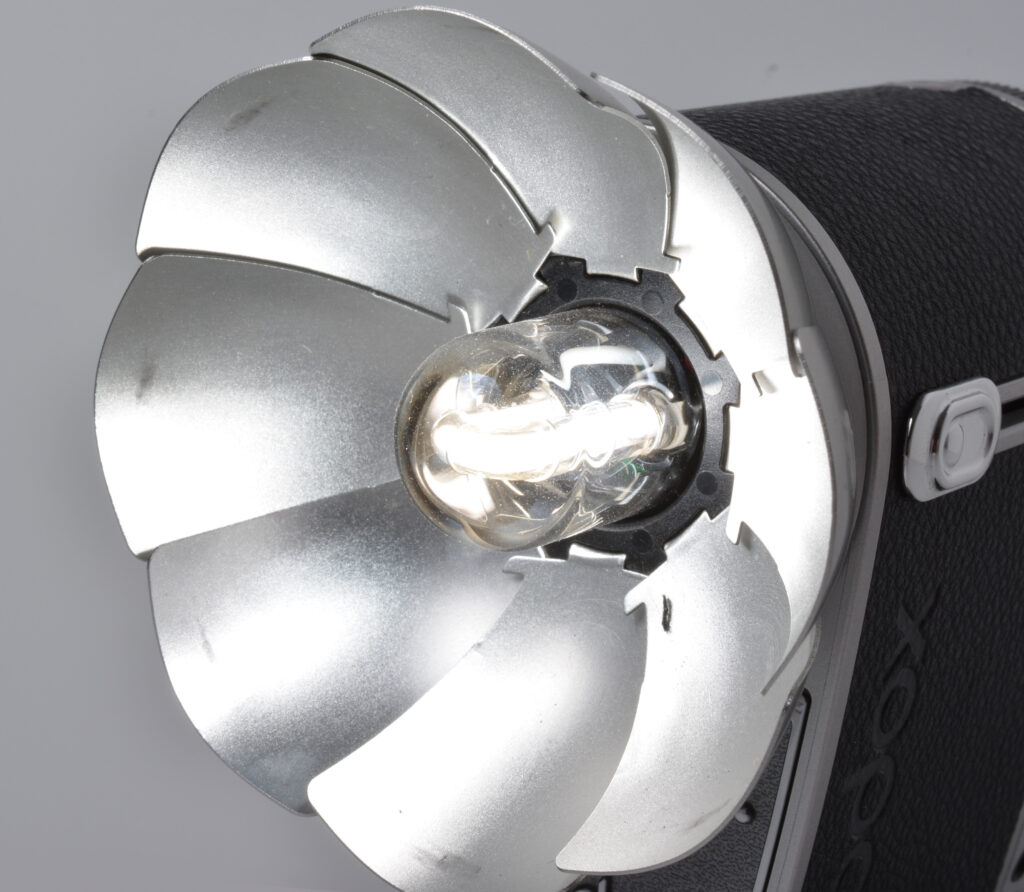 The reported Guide Number (GN) for the Godox Lux Cadet is 10 (slightly lower than the GN for the Senior and Junior flashes: 14 and 12 respectively). For purposes of this review, you don’t need a technical understanding of GN (see this explanation, if you’re interested). All you need to know is that other things being equal, a higher GN indicates greater flash power.
The reported Guide Number (GN) for the Godox Lux Cadet is 10 (slightly lower than the GN for the Senior and Junior flashes: 14 and 12 respectively). For purposes of this review, you don’t need a technical understanding of GN (see this explanation, if you’re interested). All you need to know is that other things being equal, a higher GN indicates greater flash power.
The other things being equal is crucial. When the Lux series was first announced, I saw a lot of online comments bemoaning their low GN. My take on this is that (a) these flashes are not as weak as the GN might suggest, and (b) to the extent that they are weaker than some other speedlights, it’s not a problem for the type of scenarios in which I foresee these flashes being used.
 Let’s talk about GN first. Most modern flashes have zoom capability, that is, you can control the spread of light. Just like a hosepipe, a narrower beam means more power, which translates to a higher GN. On spec sheets, the GN for flashes with zoom capability is often reported at the longest focal length, so it sounds more impressive. For example, the GN for the Nikon SB800 – a classic speedlight – is 56. But that figure is for when the flash is zoomed to 105mm. At 28mm – as you can see from the manual (PDF) – the GN drops to 32.
Let’s talk about GN first. Most modern flashes have zoom capability, that is, you can control the spread of light. Just like a hosepipe, a narrower beam means more power, which translates to a higher GN. On spec sheets, the GN for flashes with zoom capability is often reported at the longest focal length, so it sounds more impressive. For example, the GN for the Nikon SB800 – a classic speedlight – is 56. But that figure is for when the flash is zoomed to 105mm. At 28mm – as you can see from the manual (PDF) – the GN drops to 32.
When you consider that the Cadet is a “fixed focal length” flash with a relatively wide beam (28mm, according to the spec sheet), a GN of 10 is not bad. It means that at, say, ISO 400 and f/2, you can light a subject which is 10 metres away.
Besides, specs are all very well, but at the end of the day, I trust real-world experience: how does a thing perform in the field? I’ve used the Cadet extensively over the last couple of months, and my takeaway is that it is sufficiently powerful for most common scenarios where you would use a flash like this one, i.e. where the subject is not more than a few metres away, and the ambient light is not too bright.
Now if you want to light up a whole basketball court, or overpower the sun at high noon, the Cadet evidently won’t do the job. For such scenarios, Godox and other manufacturers offer more powerful (but also bigger and more expensive) lighting solutions. But the Cadet is more than adequate for taking photos on a night-out with friends, or as fill flash in the daytime. It can even kill the ambient, if the ambient is not too strong.
Flash sync
The Cadet can be fired in three ways, plus a non-standard fourth way.
1. On-camera: The first, most common use is on-camera, with the flash mounted on the hotshoe. This is what I used for most photos in this review, like the one below.
 2. Wired: Second, as I mentioned, the Cadet has a 2.5mm port for a cable, which allows the flash to sync with compatible cameras. It also comes with a PC sync cable (included). The cable is a short one (around 30cm) so it’s not very good for off-camera flash, but it’s still useful on older film cameras which don’t have a hotshoe. For instance, my Minolta Autocord TLR only has a “coldshoe” – a bracket where you can mount the flash, but there’s no automatic sync. However, the camera does have a PC terminal, so I can use the cable to fire the Cadet. If your camera has a different type of port, or if you want a longer cable to move the flash further off camera, you should be able to buy appropriate cables online; they are typically inexpensive and widely available.
2. Wired: Second, as I mentioned, the Cadet has a 2.5mm port for a cable, which allows the flash to sync with compatible cameras. It also comes with a PC sync cable (included). The cable is a short one (around 30cm) so it’s not very good for off-camera flash, but it’s still useful on older film cameras which don’t have a hotshoe. For instance, my Minolta Autocord TLR only has a “coldshoe” – a bracket where you can mount the flash, but there’s no automatic sync. However, the camera does have a PC terminal, so I can use the cable to fire the Cadet. If your camera has a different type of port, or if you want a longer cable to move the flash further off camera, you should be able to buy appropriate cables online; they are typically inexpensive and widely available.
3. Optical control: The third option is optical control, which is one way to achieve wireless off-camera sync. (It used to be called “optical slave”, but the term is now deprecated – for good reason! Most companies including Godox have phased it out and instead use the term “optical control”.) Essentially, this means that the flash will fire synchronously when it “sees” another flash. The Cadet has two optical control modes: S1, where it fires instantly when it sees a flash, and S2, where it ignores the first pre-flash and only fires in response to the second (actual) flash. Optical control is useful if, for example, you want to use your on-camera flash as a fill light, and the Cadet as an off-camera key light. Unlike some of the higher end Godox flashes, the Cadet is not compatible with wireless radio control.
In the photos below, I used an on-camera flash (Godox Lux Elf, which I’ll review soon) as the fill light, and the Lux Cadet (placed on camera left) as an off-camera key light. The Cadet was set to S1 mode, firing when it “saw” the on-camera flash.
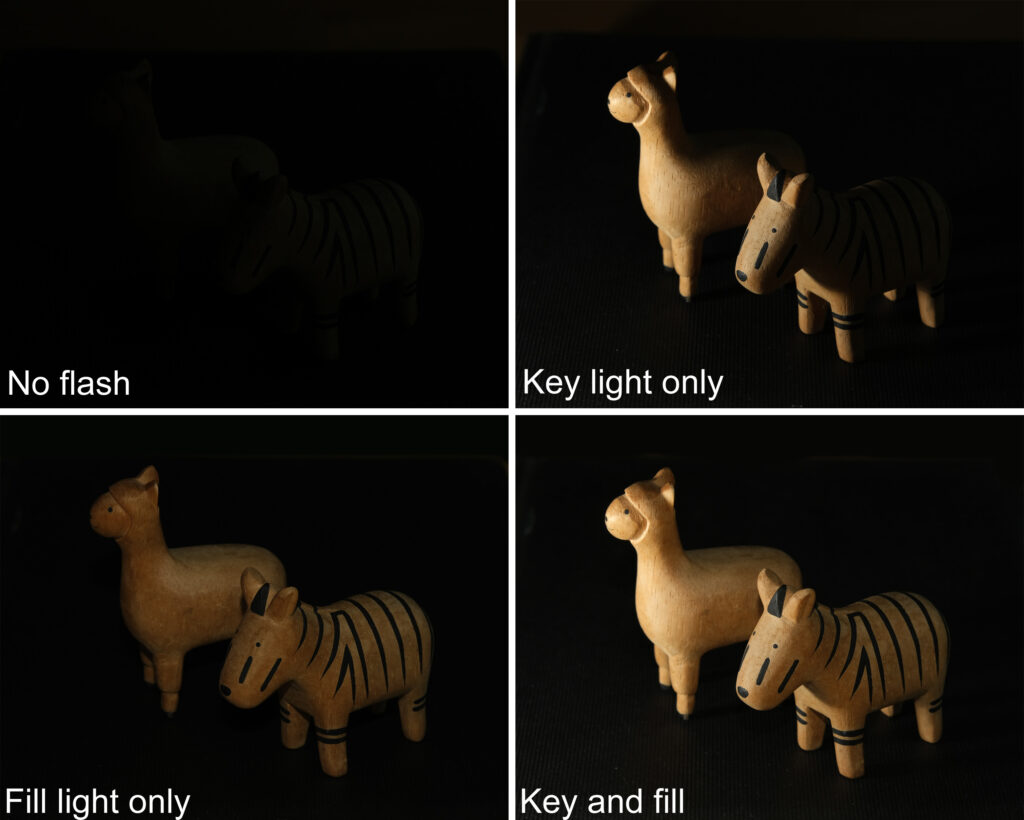
4. “Manual” sync: There’s a fourth way to fire the flash, which is a bit of a hack. If your shutter speed is long enough – let’s say 1/2 sec or more – you can “manually” sync the flash, by which I mean hold it in your other hand and press the Test button, timing it so that the flash fires when the shutter is open.
 The photo at above left, of my friend Pearl, was shot with on-camera flash, while for the one at above right, I held the flash in my left hand for more angular lighting. The shutter speed was 1/2 sec, allowing me enough time to manually fire the flash. There are some more examples of “manual sync” in the Film Photos section below.
The photo at above left, of my friend Pearl, was shot with on-camera flash, while for the one at above right, I held the flash in my left hand for more angular lighting. The shutter speed was 1/2 sec, allowing me enough time to manually fire the flash. There are some more examples of “manual sync” in the Film Photos section below.
Power
Unlike the Godox Lux Junior which uses AAA batteries, the Cadet runs on a Lithium battery, which also contributes to a faster recycle time (≈2.5 sec at full power). The battery is charged by plugging a USB-C cable (supplied) into the flash unit. This is super convenient. My only gripe is that, since lithium batteries tend to lose their charge-holding capacity over time, I would have preferred the battery to be replaceable, not integrated.
Digital samples
Now for some more sample images showing how the flashes perform in various scenarios.
The ability to adjust flash power is useful not just when you want to crank it up, but also when you want to turn it down. When the subject is very close, like my friend Priyanka in the photo below, 1/64 power is often enough.
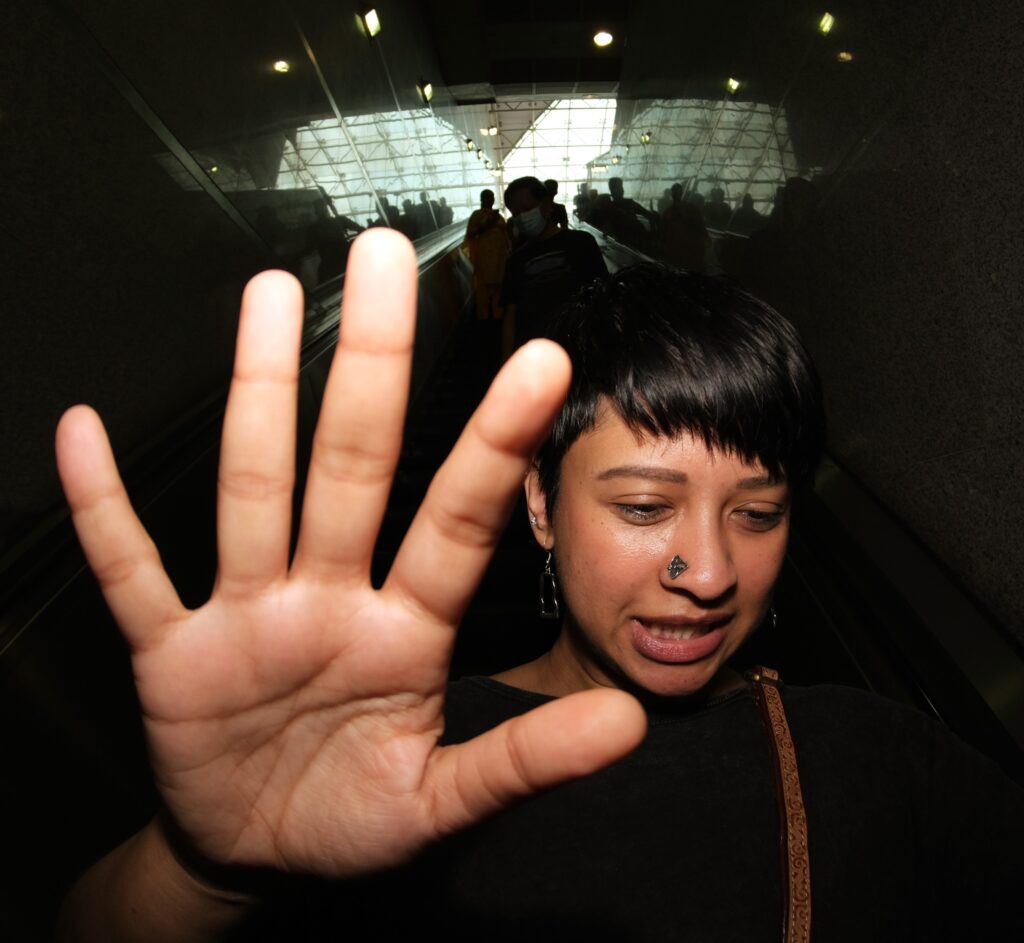
I also took a couple of close-up photos of my cat, both with and without flash.
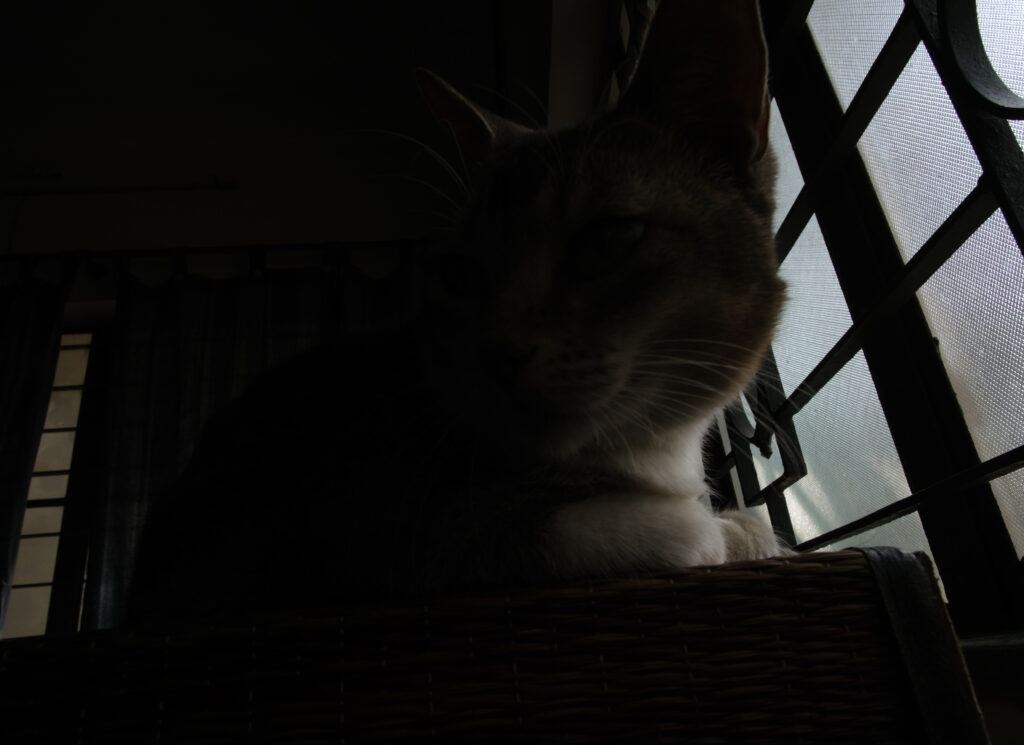
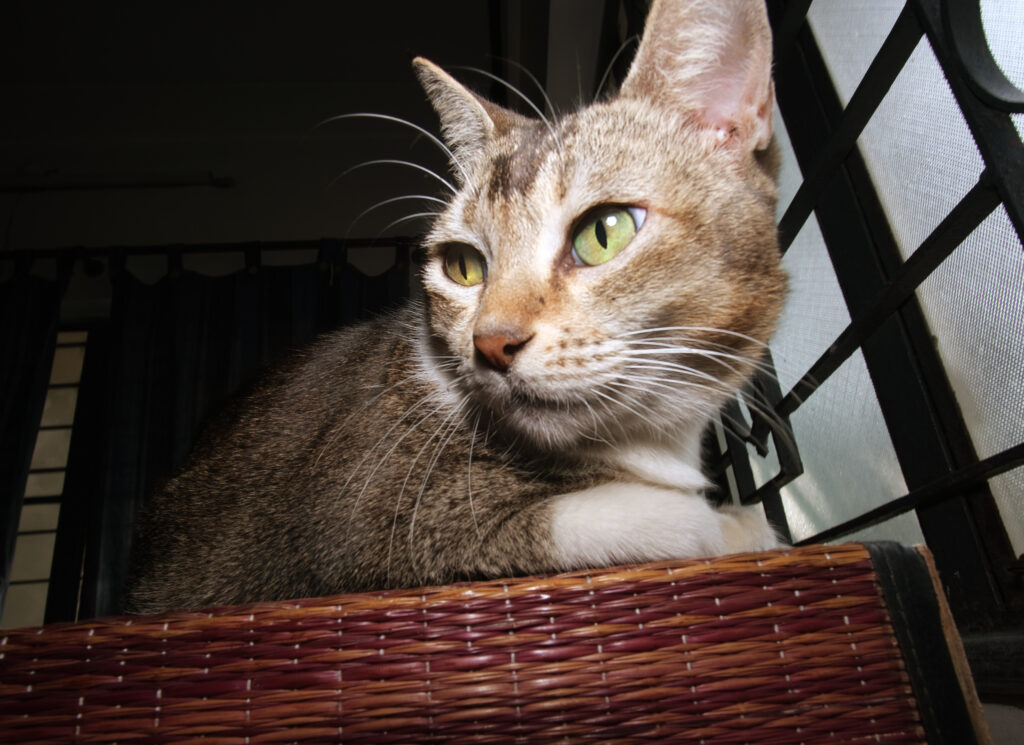
Perhaps because the flash is so small and light, I often find myself using deliberate camera movement and shutter drag. (If you’re not familiar with the term, shutter drag is where you use a long shutter speed to convey a sense of motion e.g. with light streaks or blur, coupled with flash to freeze the subject).
Of the three photos below, the first is without flash, the second is with flash but holding the camera still, and the third is with flash plus deliberate camera movement (at 1/4 sec) to create light streaks in the background.
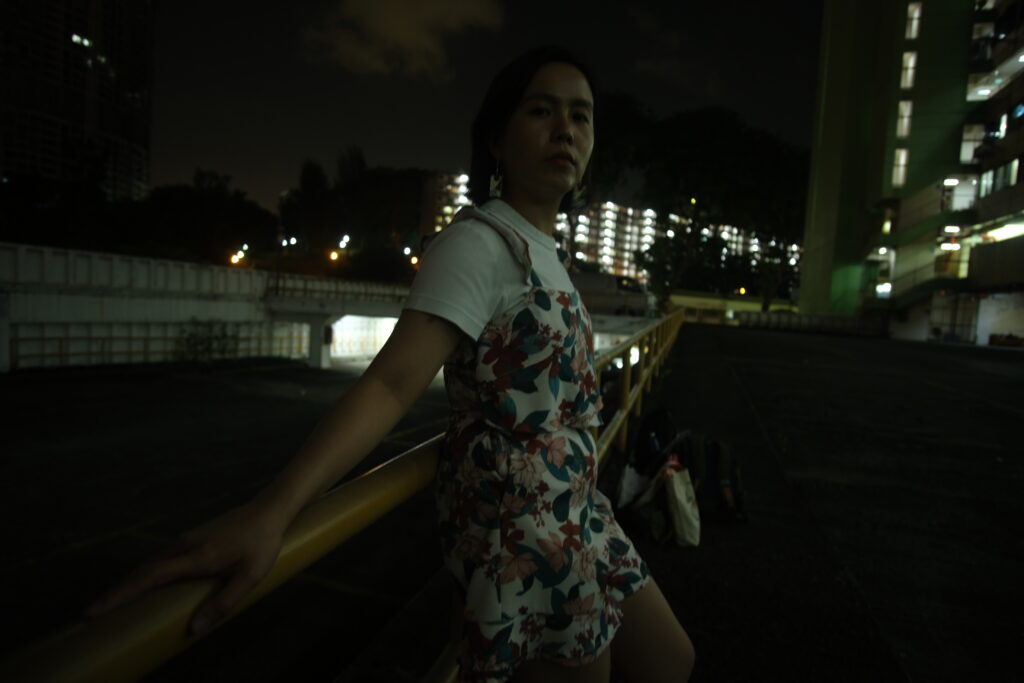
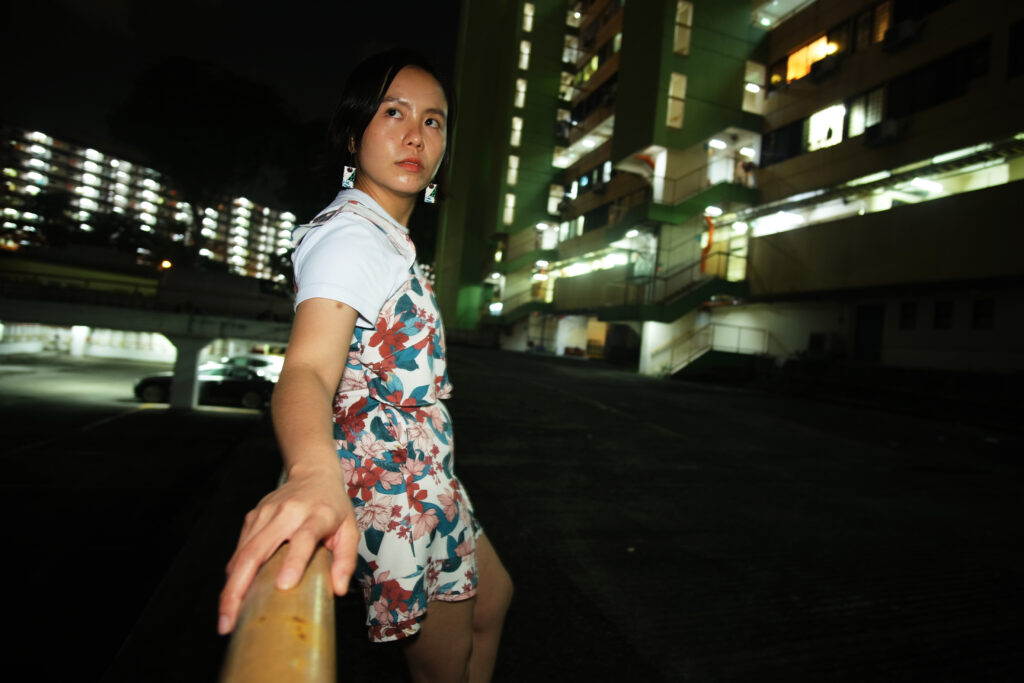
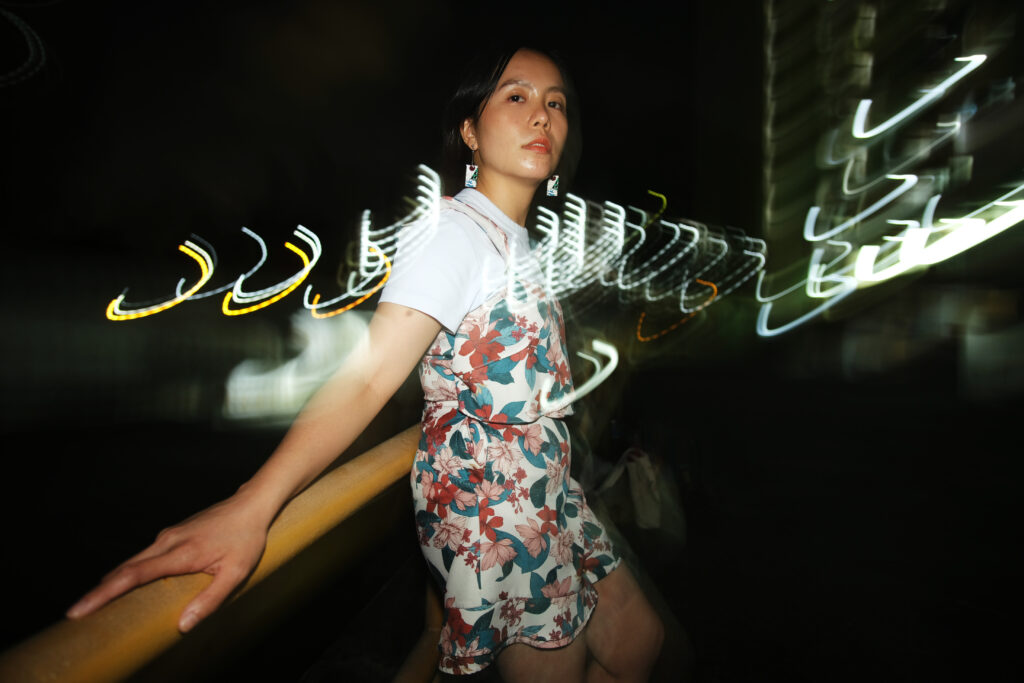
The photo below is of a fire dragon dance at a Taoist temple in Singapore. The long exposure (1/8 sec) and deliberate camera movement created the light streaks and blur, capturing the chaotic nature of the dance, while the flash froze the dragon and showed enough detail to help us see what’s going on.
 I don’t go to many clubs and parties, but when I do, I like using shutter drag.
I don’t go to many clubs and parties, but when I do, I like using shutter drag.
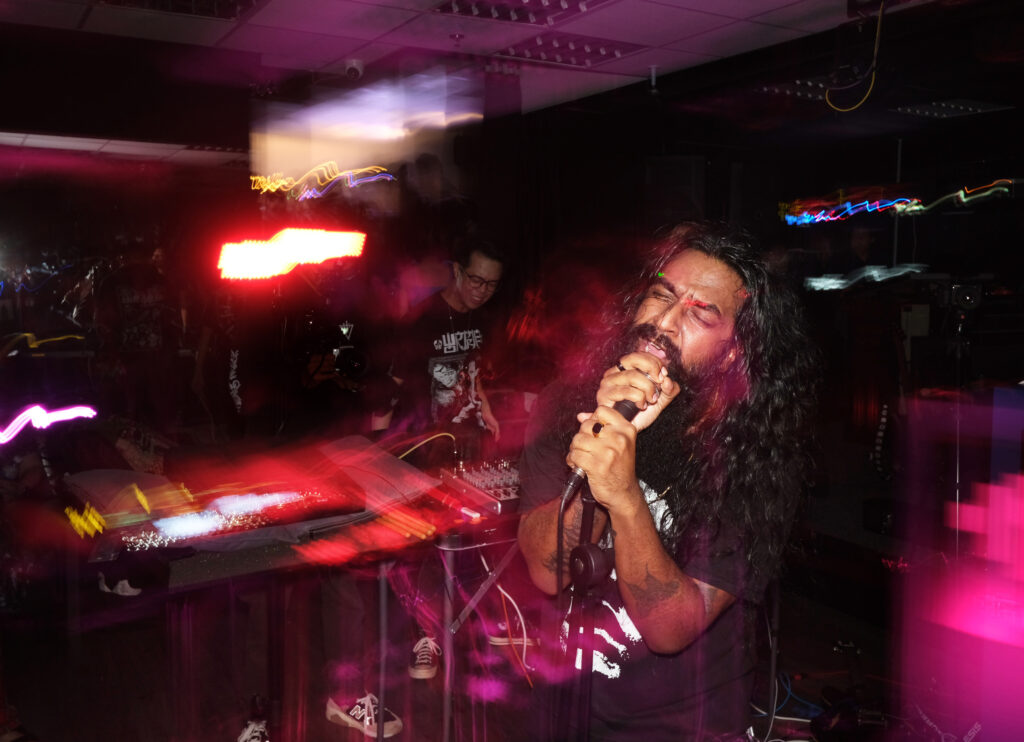

Many photographers like to use rear-curtain sync for long-exposure flash photos. The Cadet product page and manual don’t talk about rear-curtain sync specifically, but it works on my digital camera (Fuji X-E4), and I suspect it will work on other cameras too as long as they have a rear-curtain sync setting.
Film samples
Now let’s look at how the Godox Lux flashes play with film cameras. My Minolta X-370s SLR has a hotshoe, and the Cadet works seamlessly with it. The photo below, of my friend Redwan, was shot on CatLabs 320 film. I used a long shutter speed (1/4 sec) to capture some of the ambient light; the flash makes him stand out a bit and also freezes motion (prevents him from being all blurry).
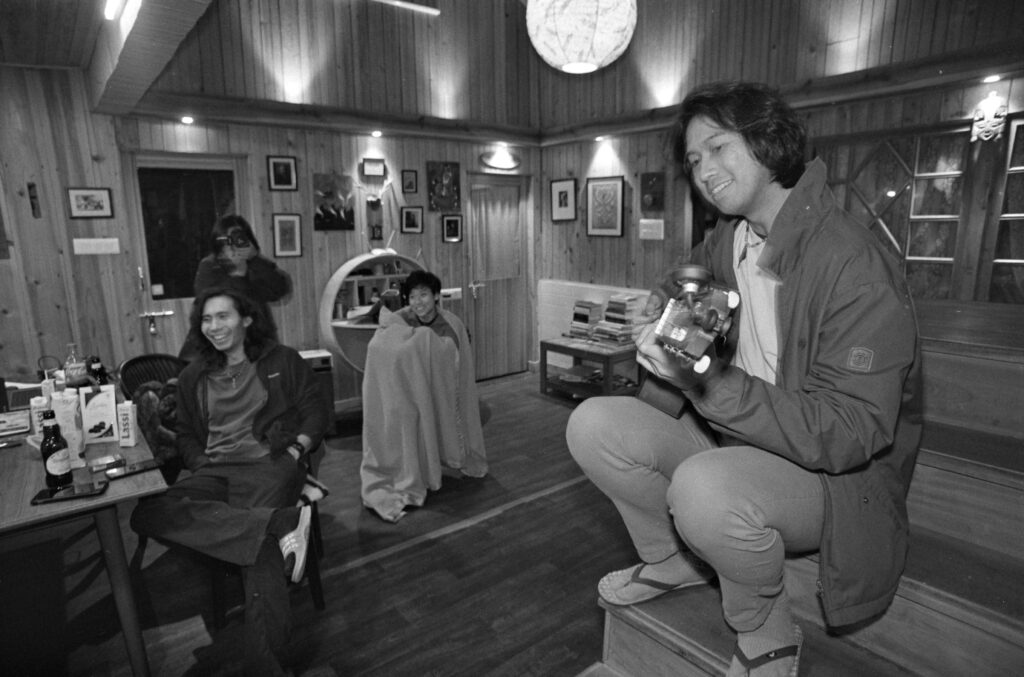
My Leica M3 doesn’t have a PC sync port; instead it has a proprietary flash terminal. You can use it with an adaptor, but I haven’t bothered to get one since I rarely use the Leica for flash photography. So for the photos below, shot on Fuji Pro 400H film, I used the “manual sync” hack described earlier, at a shutter speed of 1/2 sec.
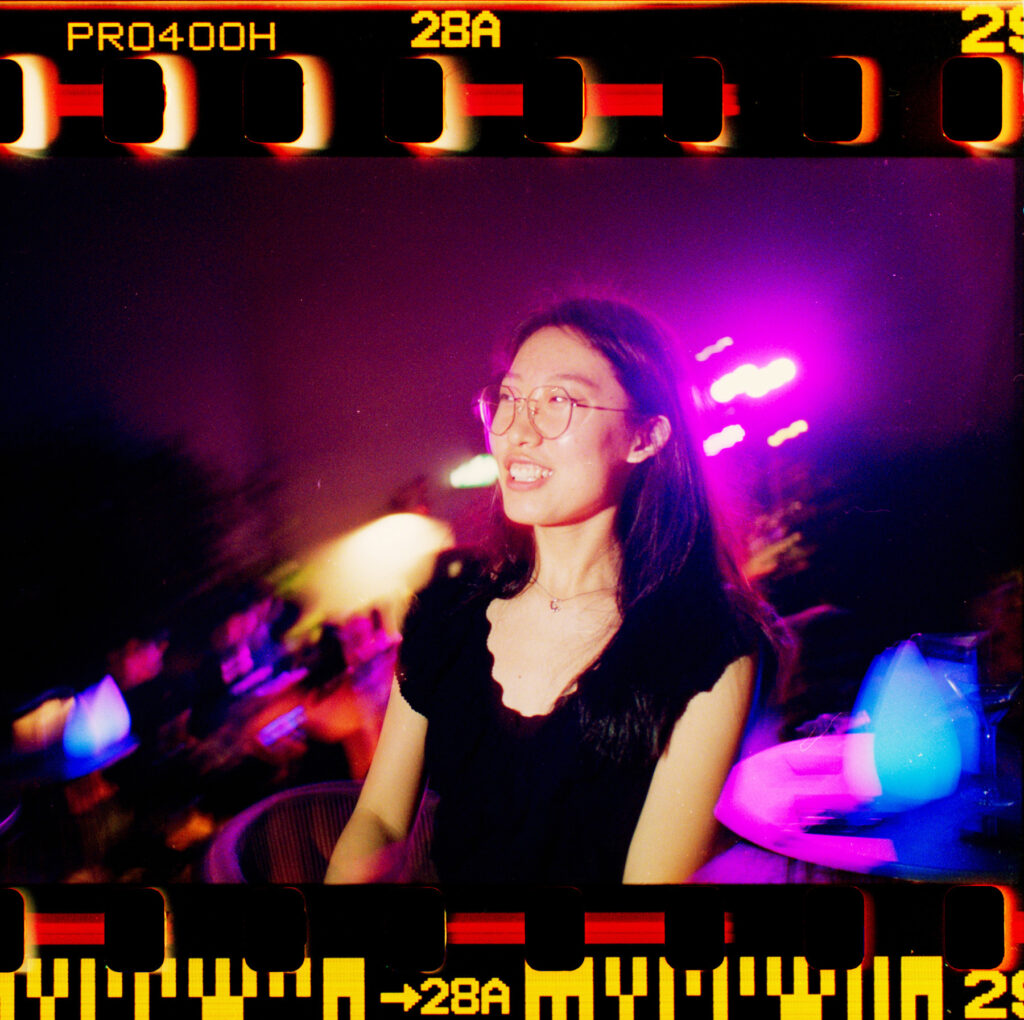
The second photo has an obvious light leak (I opened the camera back by mistake), but I still like it.
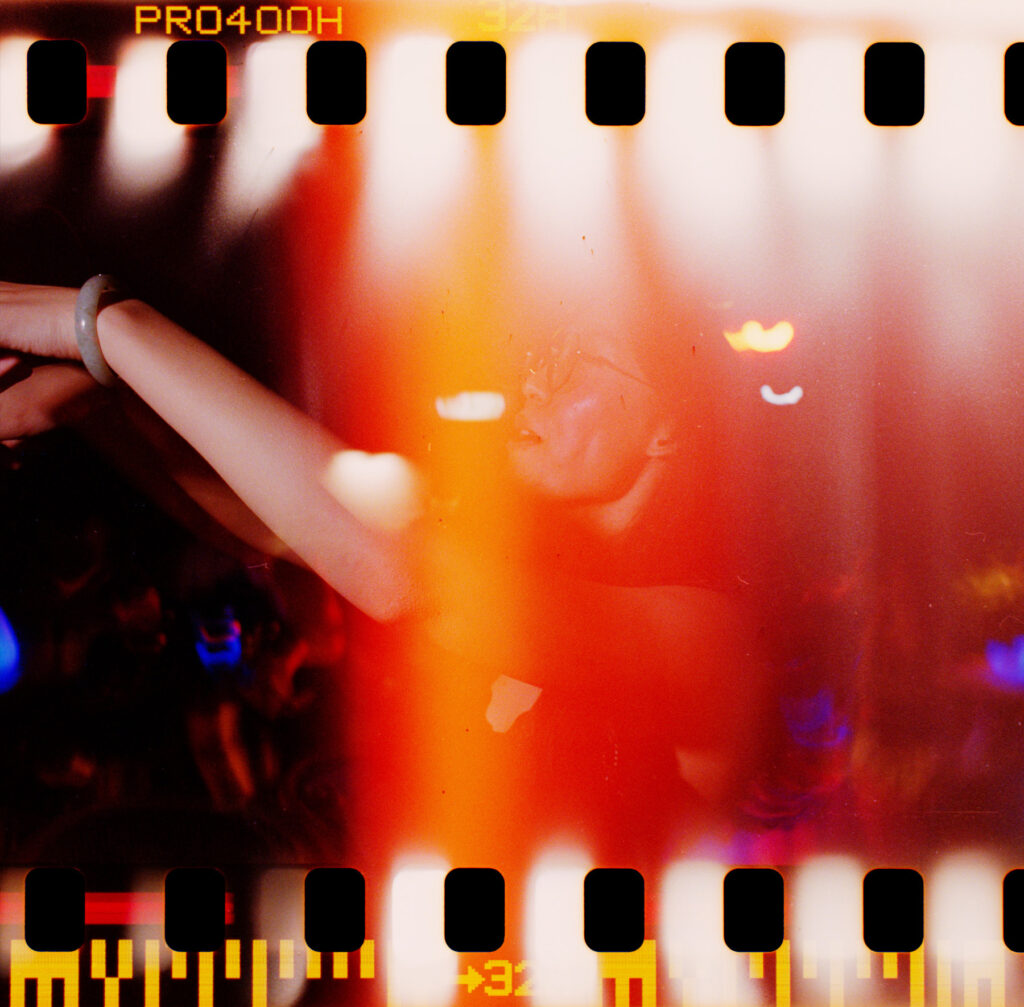
Final thoughts
At a time when the market is awash with a mind-boggling array of lighting solutions, the Godox Lux series is rather unique – retro-styled flashes, which nevertheless boast modern features like adjustable flash power and optical control. They accessorise really well with film cameras or retro-styled digital cameras, but they pack enough features and flash power to be much more than just accessories.
The Cadet is small and light enough that you can take it to a birthday party or a nightclub, have it mounted on your hotshoe all night, but still not mind the added bulk. It looks cool, which tends to put people at their ease – much more so than a “serious” speedlight or strobe – and makes it a great conversation-starter.
 There are some features which are available on many conventional speedlights (e.g. the Godox TT685), but not on the retro-styled Lux series: tilt, swivel, zoom, TTL, radio receiver and high-speed sync. If these features are important for you, the Lux series may not be a good fit. This is something to be aware of, but to me, it’s not a deal-breaker; rather, I see it a compromise. On the other hand, they do have certain advantages – they look cool, are relatively cheap and compact, and as my sample photos have hopefully showed, there’s still a lot you can do with these flashes.
There are some features which are available on many conventional speedlights (e.g. the Godox TT685), but not on the retro-styled Lux series: tilt, swivel, zoom, TTL, radio receiver and high-speed sync. If these features are important for you, the Lux series may not be a good fit. This is something to be aware of, but to me, it’s not a deal-breaker; rather, I see it a compromise. On the other hand, they do have certain advantages – they look cool, are relatively cheap and compact, and as my sample photos have hopefully showed, there’s still a lot you can do with these flashes.
With the Lux series, Godox clearly set out to design flashes which are retro-cool, small and relatively inexpensive. For my money, they succeeded. Assessed on their own terms, the only two improvements I can think of are: (a) instead of the screw-type hotshoe safety lock, I would like to see a quick-lock mechanism like on some other Godox flashes, and (b) a removable battery, so that it can be replaced when it reaches the end of its lifespan.
If you want the retro look and feel, go for a Lux flash. If you want a full-featured speedlight, there are lots of options from Godox as well as other manufacturers. For me – and I suspect for many other amateurs – look and feel are a big part of the photography experience, and there’s nothing wrong with that. Features are nice, but taking pictures should also be fun, no?
Thanks for reading. For more of my work – with and without flash – feel free to check out my Instagram.
Share this post:
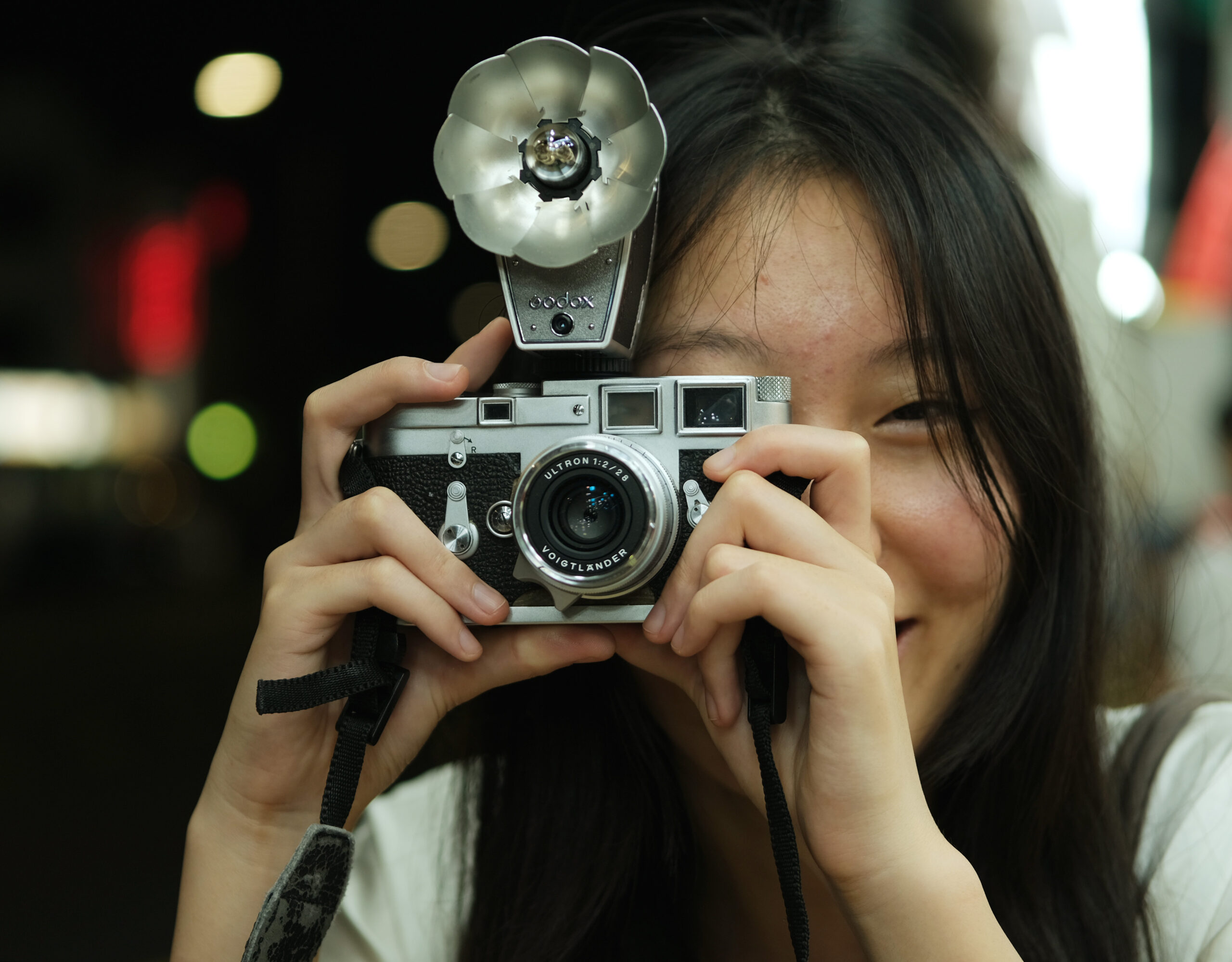
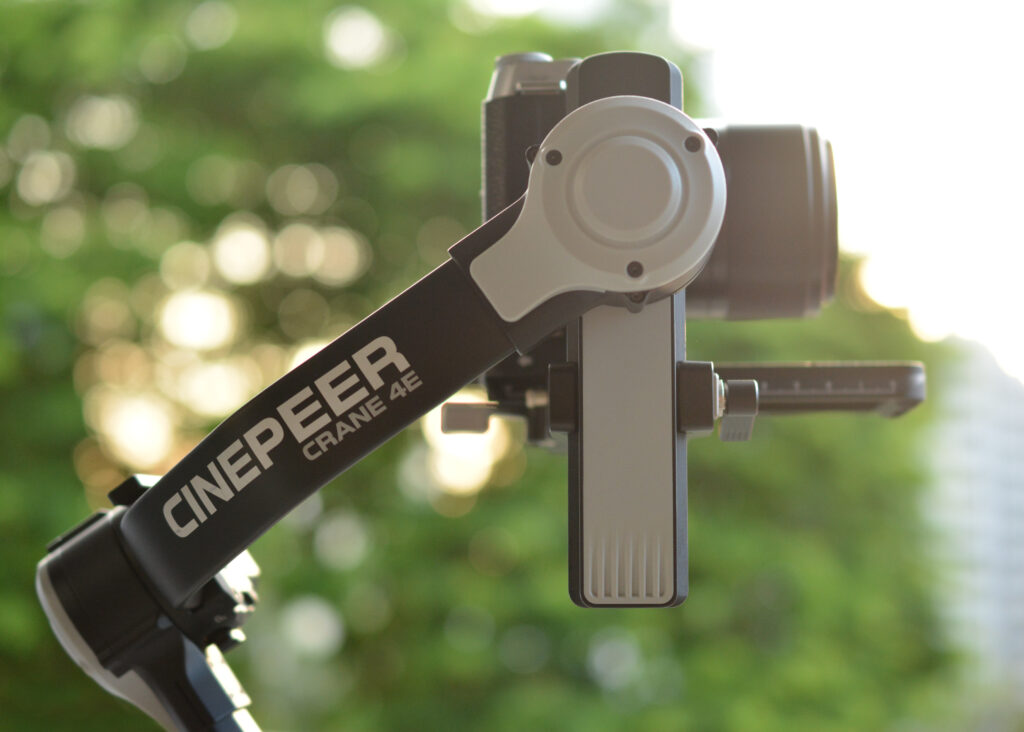
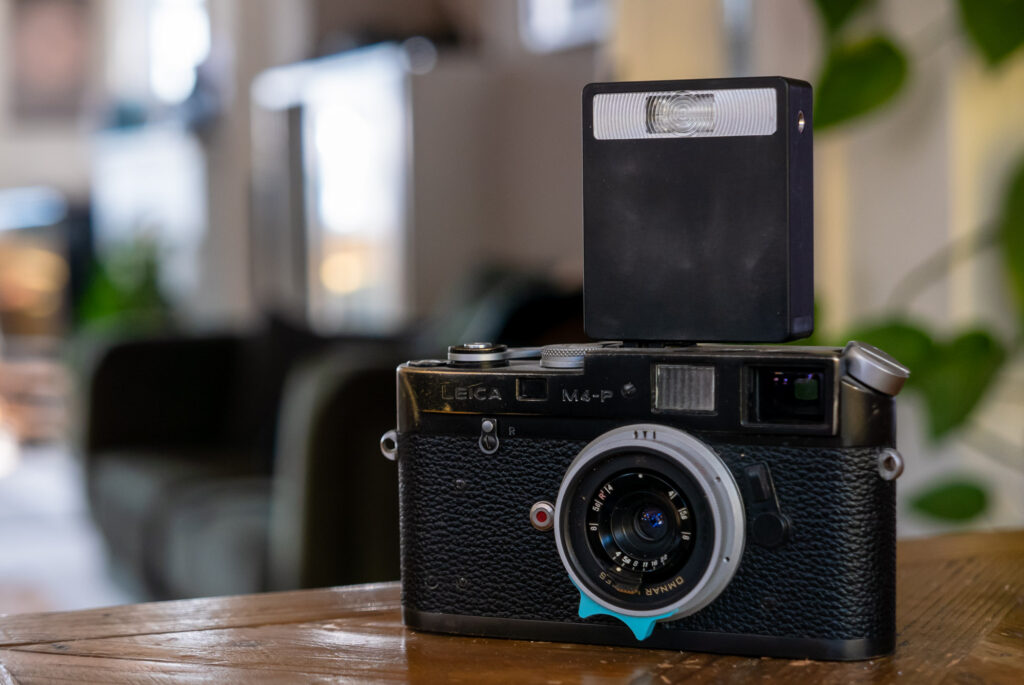
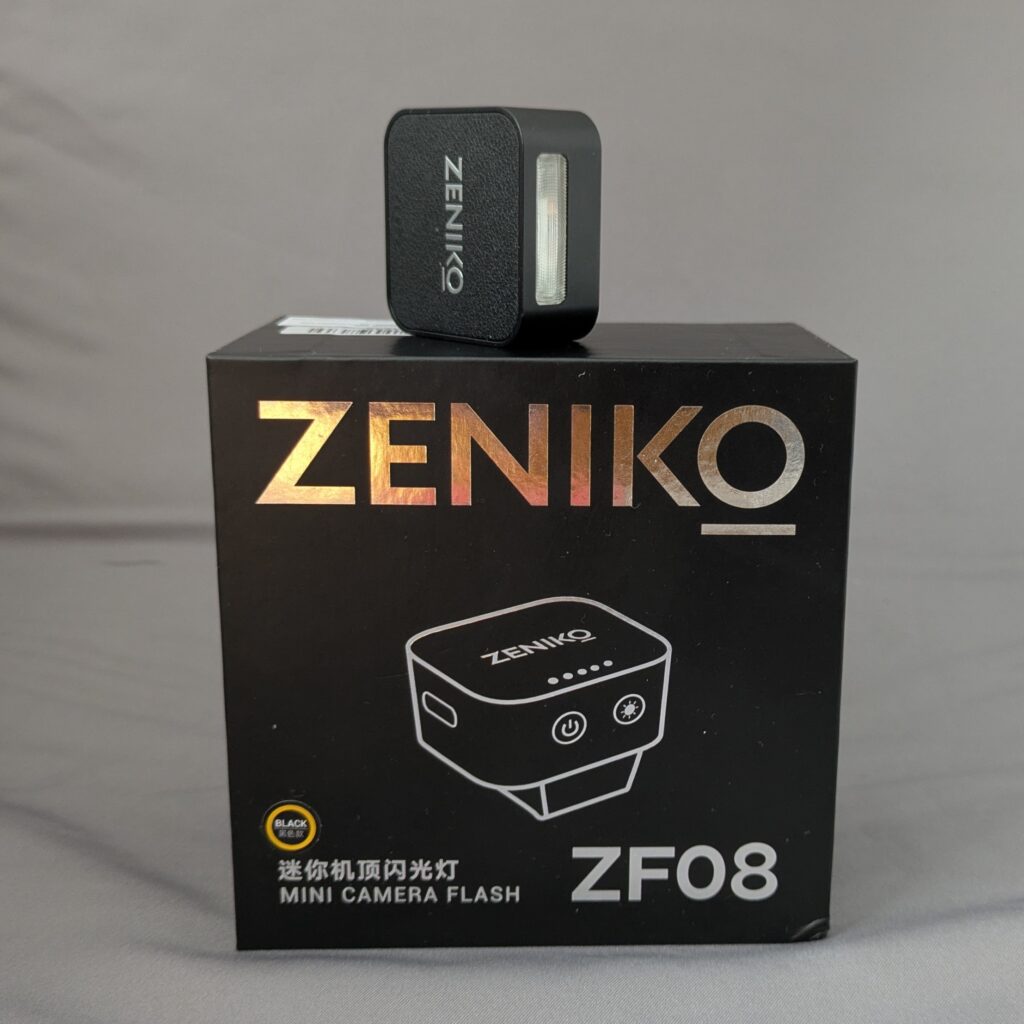




Comments
Ibraar Hussain on Godox Lux Cadet – Retro Flash Review
Comment posted: 23/04/2024
Comment posted: 23/04/2024
Leo Tam on Godox Lux Cadet – Retro Flash Review
Comment posted: 23/04/2024
Comment posted: 23/04/2024
Gil Aegerter on Godox Lux Cadet – Retro Flash Review
Comment posted: 23/04/2024
Comment posted: 23/04/2024
Gary Smith on Godox Lux Cadet – Retro Flash Review
Comment posted: 23/04/2024
Comment posted: 23/04/2024
Jeffery Luhn on Godox Lux Cadet – Retro Flash Review
Comment posted: 23/04/2024
Comment posted: 23/04/2024
Alvin on Godox Lux Cadet – Retro Flash Review
Comment posted: 08/06/2024
I know that despite the Senior being rated at GN14 and the Junior rated at GN12, you found in practice the Senior as having a "weaker" and softer flash due to its reflector dish diffusing the light more. I was wondering if since the Cadet is only rated at GN10 and it also has a reflector dish, if you found it to be noticable weaker than the Senior?
Additionally, both the Senior and the Junior (though appearing cooler) are rated at 6000k +-200, while the Cadet is rated at 6200k +-300. I really liked the look of the photos from the Senior you took and was wondering if the Cadet ever came off as too warm? I will be primarily using this on my Zf though so not sure if that's really much of a concern.
Finally, I know you posted some comparisons of the sharpness that shadows cast between the Senior and Junior (https://www.35mmc.com/wp-content/uploads/2023/09/shadow-e1665508151663.jpg). I was wondering where the Cadet fell in between the two. I do like the look of the shadows on the Senior more.
I'll be heading to the camera store tomorrow to hopefully try them both out. Ultimately it might come down which form factor I like more, but some insight into the differences between the Senior and Cadet would be awesome in case I'm not able to test it out extensively in store.
Thank you again!
Comment posted: 08/06/2024
Comment posted: 08/06/2024
Comment posted: 08/06/2024
Humberto on Godox Lux Cadet – Retro Flash Review
Comment posted: 20/05/2025
Comment posted: 20/05/2025